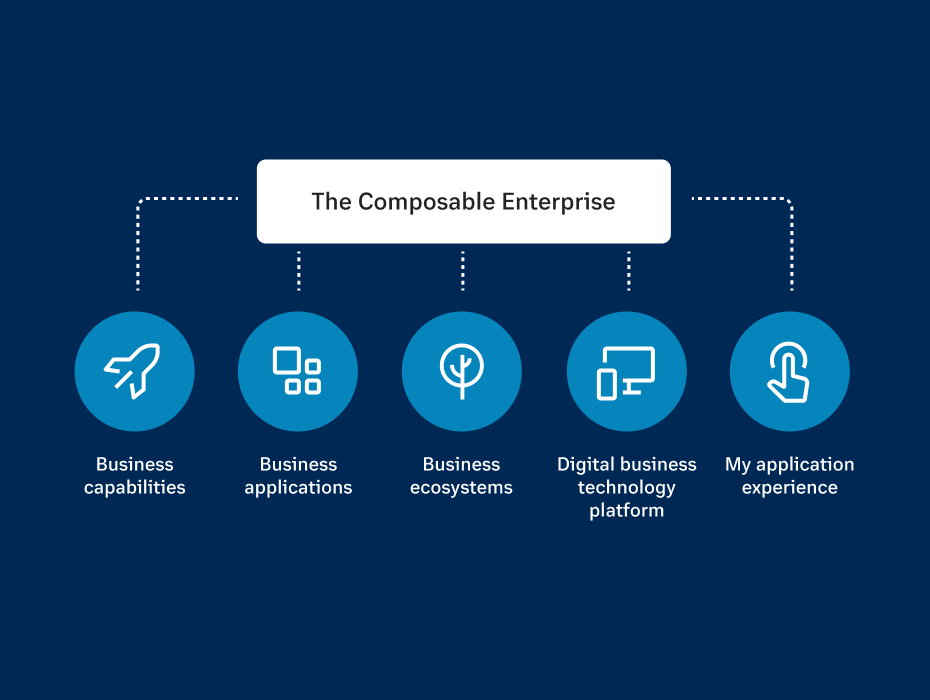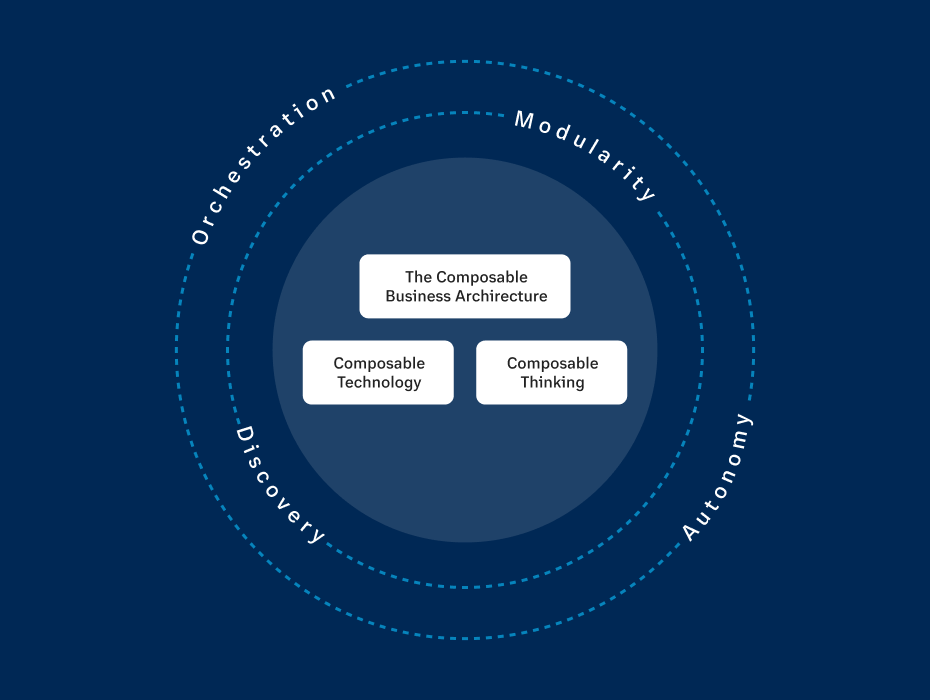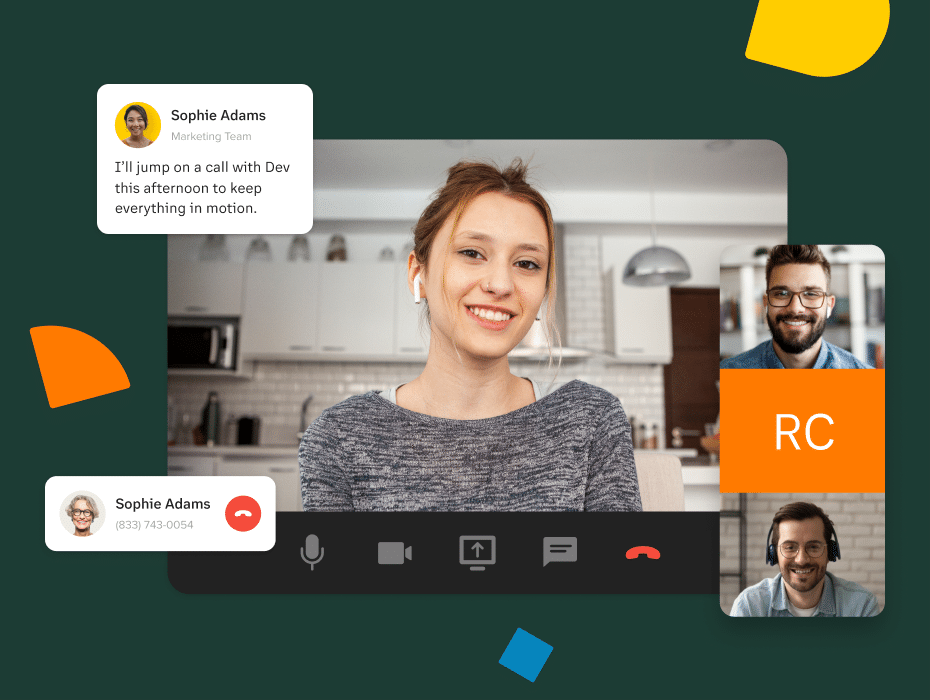Highlights
- Composable enterprise takes a modular approach to digital services, using microservices and PBCs as building blocks.
- A composable enterprise model can be more personalized to your business needs and adapt quickly to changing circumstances.
- Adopting a composable business approach takes some planning, although, once the foundations are in place, it can be swiftly improved and tailored based on data analytics.
Considering the past two years, we can safely say that flexibility and adaptability have become essential for any business. From moving commerce stores online to transforming business models to suit new circumstances, this agility has been to the advantage of those enterprises that have embraced it.
Through the use of cloud services, data and analytics, and application programming interfaces (APIs), companies moved away from monolithic applications and legacy systems, allowing for more digital transformation.
⭐ The future of work ⭐
Are your teams ready to go remote? Here’s the secret to a successful hybrid and remote-first workplace.
Today, a new model of enterprise is being favored by many businesses and CIOs: the composable enterprise. Let’s look at what it means.
What does composable enterprise mean?
Composable enterprise is a concept first developed by Gartner. Instead of presenting your services as one complete package which serves limited purposes, composable enterprises focus on the individual components at play and present these as microservices. Sometimes called packaged business capabilities (PBCs), these can then be arranged and personalized to meet the unique needs of your customers and enterprise as a whole.
For example, elements of your business ecosystems may also be used within your business capabilities, such as the sales team’s processes or internal communications, or vice versa.
Composable enterprise reuses systems and components in multiple processes, creating streamlined digital experiences. Likewise, where business functions are not working effectively, a composable enterprise can swap out PBCs and replace them with suitable microservices.
Benefits
With technology becoming an ever more central aspect of business, including through elements such as artificial intelligence, cloud services hosting, e-commerce platforms and data, and automation, a composable enterprise can help businesses stay competitive and current in their processes.
Personalized solutions
Taking a modular approach with composable architecture means that you can use the building blocks that help your workflow and swap out other software components that don’t fit in with your business strategy.
Your composable enterprise model can take into account specific challenges your business faces and find business solutions without necessarily spending time and energy on new technological innovation.
Self-sufficiency
Composable enterprise is low-code, meaning that even those with basic software coding knowledge are still able to assemble microservices and PBC within your IT infrastructure to meet your business needs. This empowers your developers to deal with API management independently, without outsourcing or relying on monolithic application experts.
Stay informed with RingCentral
Supports enterprise of any size
The scalability of composable architecture makes it easy to design and run software for smaller departments and teams, or to use it to support more complex business models. By being able to integrate features such as artificial intelligence and automation into your IT infrastructure, a composable enterprise can improve your customer experience and connectivity across your business, regardless of size.
Adapts quickly
Using a modular approach means making changes to applications, creating updates, or reusing PBC can be done as and when needed. Rather than having to recode and retest when changes are needed, a composable enterprise model can integrate existing components with low code and little difficulty caused by knowledge or software silos.
Whether facing a pandemic or updating your SaaS features, this can be managed and actioned efficiently.
Improves on existing software
Composable enterprise’s main advantage is that it builds on and reuses existing PBCs and microservices. This means new projects or processes don’t require new technology or innovation to find a solution.
Instead, a composable enterprise model can focus on making improvements, using data analytics and user experience, thus helping your existing software to better serve your business needs.
How to develop a composable enterprise
Moving your IT infrastructure from legacy systems to a composable architecture takes time to plan and transition. Although modular systems make it easier to adapt your software later down the line, it’s worth putting the effort in initially to get the groundwork in place. Use the following five-step plan to help your business adapt to a more composable model.
1. Decide on your objectives
It’s unlikely any two composable enterprises will be identical, due to the variety of factors that influence its setup in your business.
Consider the following questions:
- What kind of customer experience do you want to deliver?
- How do you want to improve employee user experiences with your IT and communication systems?
- How do you hope a composable enterprise will improve different areas of your business?
Having these in mind helps when deciding on components and APIs to be used.
2. Create a process map
Begin by choosing one process your business hopes to improve with a composable enterprise. List all the different elements of that process in order, identifying the business need it aims to resolve and what outcomes should be expected.
Note the different steps required and their purpose, showing the journey that customers or employees go through to reach their end goal.
For example, making a transaction is a common process for many business users. It may be initiated online by customers selecting a “buy now” button. From here, establish the different actions needed throughout the transaction process, including paying for the item and notifying your systems to dispatch the item.
This is a simplistic example, but you can also draw up process maps of larger business functions, highlighting how smaller processes within the business interact with one another.
3. Choose your APIs
APIs are key parts of your composable enterprise, building connectivity within your business by using cloud services to share data from various touchpoints.
Getting the correct APIs in place acts as the foundation onto which other additional microservices and capabilities can be built. If your API is difficult to use it affects the user experience, meanwhile a suitable API makes scalability easy and improves your workflow.
4. Integrate features
Now you have a basic API in place, you can build on the features and capabilities needed for your business processes. PBCs can create all sorts of features from using automation to fill in forms with previously recorded information, to using artificial intelligence to personalize suggestions for customers. These improve your customer journey and use software components to meet business needs, rather than adapting processes to the available software.
5. Collect user experience data
Creating a composable business means that you can constantly update and improve your software to more closely meet your changing business needs.
Through data analytics and feedback, identify areas of user experience where your workflow process could be improved, and integrate different PBCs to create a solution. Alternatively, reuse software components that are benefiting your enterprise for other business functions.
Launch your composable enterprise model
When looking for a more agile and adaptable business model, your technology and software shouldn’t be holding you back. Having a composable enterprise model means your IT infrastructure can change and respond to the needs of your business and your customers easily. All by reusing existing software components and taking a modular approach to the microservices you have available.
A composable business also helps facilitate technological innovation, using PBCs and APIs as the building blocks for new software developments to integrate with and improve.
Rather than starting from scratch for every digital service, composable elements mean the latest developments and new technology can quickly be built into existing software systems. This digital transformation constantly innovates new customer and user experiences.
Updated Mar 07, 2022














